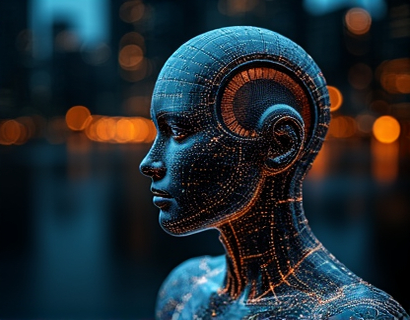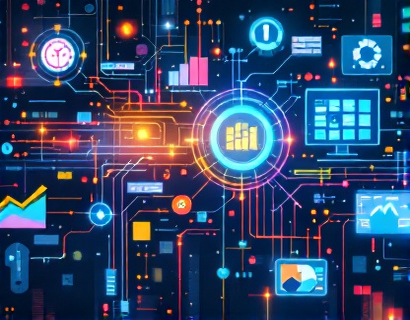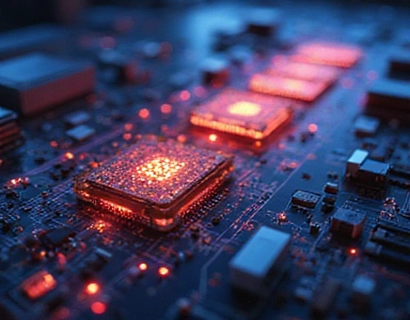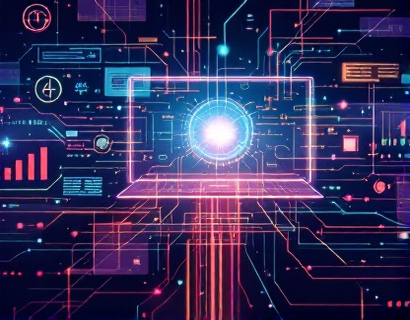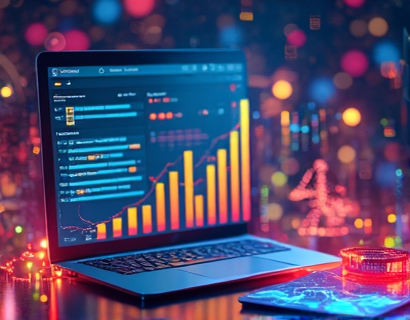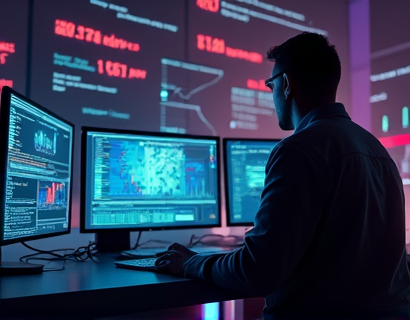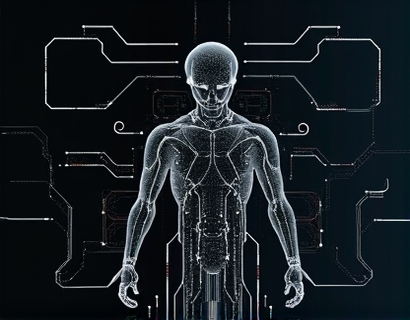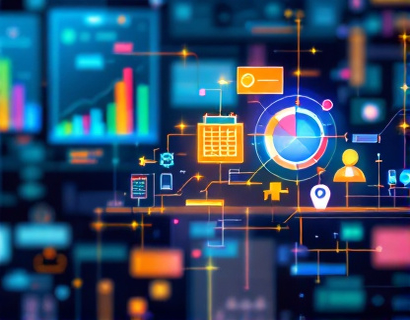Unlocking Digital Transformation: Leveraging AI and Crypto for Enhanced User Experiences
The digital landscape is rapidly evolving, driven by technological advancements that redefine how we interact with technology. At the forefront of this transformation are two revolutionary technologies: Artificial Intelligence (AI) and Cryptocurrency. This article delves into the synergy between AI and crypto, exploring how their integration can unlock new dimensions of user experience, security, and innovation. For tech innovators and crypto enthusiasts, understanding this synergy is crucial to staying ahead in the digital revolution.
The Intersection of AI and Cryptocurrency
AI and cryptocurrency may seem like disparate entities, but their convergence is creating a powerful force in the tech industry. AI, with its ability to process vast amounts of data and learn from patterns, is enhancing the functionality and security of blockchain-based systems. Conversely, the decentralized and secure nature of cryptocurrency provides a robust framework for AI applications to operate in a trustless environment.
Enhanced Insights through AI-Driven Analytics
One of the most significant benefits of integrating AI with cryptocurrency is the enhancement of insights. AI algorithms can analyze blockchain data to provide deep insights into market trends, user behavior, and transaction patterns. This level of analysis was previously unattainable, allowing businesses to make more informed decisions. For instance, AI can predict market fluctuations by analyzing historical data and real-time transactions, enabling investors to react swiftly to changing conditions.
Moreover, AI can optimize smart contracts, ensuring they execute efficiently and securely. By analyzing the code and predicting potential vulnerabilities, AI can help developers create more robust and reliable smart contracts. This not only enhances the functionality of decentralized applications (dApps) but also builds trust among users who rely on these systems for critical transactions.
Security Enhancements with AI and Crypto
Security is a paramount concern in the digital world, and the combination of AI and cryptocurrency offers unprecedented levels of protection. AI can detect and mitigate threats in real-time, identifying anomalies in transaction patterns that may indicate fraudulent activity. Machine learning models trained on vast datasets can adapt to new threats, providing a dynamic defense mechanism against cyber attacks.
Cryptography, the foundation of blockchain technology, ensures data integrity and confidentiality. When combined with AI, cryptographic techniques can be further enhanced. For example, AI can optimize encryption algorithms to balance security and performance, ensuring that data remains protected without compromising on speed or efficiency. This synergy creates a multi-layered security approach that is both robust and adaptive.
User-Centric Innovations
The integration of AI and cryptocurrency is not just about backend enhancements; it's also about creating superior user experiences. By leveraging AI, platforms can offer personalized services that cater to individual user preferences and behaviors. For instance, AI-driven recommendation systems can suggest relevant dApps, services, or content based on a user's past interactions and preferences, enhancing engagement and satisfaction.
Furthermore, AI can improve user interfaces and interactions through natural language processing (NLP) and voice recognition. Users can interact with blockchain-based services using natural language commands, making the technology more accessible and user-friendly. This is particularly beneficial for users who may not be tech-savvy, broadening the adoption of blockchain technologies.
Decentralized Identity Management
One of the most promising applications of AI and cryptocurrency is in decentralized identity management. Traditional identity systems are centralized, making them vulnerable to breaches and misuse. By using blockchain and AI, users can have control over their digital identities, storing and managing their credentials securely and privately.
AI can help in verifying and authenticating identities through biometric data and behavioral patterns. This ensures that only authorized users access their data and services, reducing the risk of identity theft. Additionally, AI can streamline the process of identity verification, making it faster and more efficient for users.
Economic Empowerment through Cryptocurrency
Cryptocurrency, powered by blockchain technology, offers a new economic paradigm that can empower individuals and businesses alike. The decentralized nature of crypto eliminates the need for intermediaries, reducing transaction costs and increasing financial inclusivity. AI can further enhance this by providing predictive economic models that help users and businesses make better financial decisions.
For instance, AI can analyze market data to forecast economic trends, helping users optimize their investments and financial strategies. Smart contracts can automate complex financial transactions, ensuring that agreements are executed precisely as intended, without the need for intermediaries. This not only speeds up processes but also reduces the risk of human error and fraud.
Tokenization of Assets
Another transformative aspect is the tokenization of assets. AI can play a crucial role in assessing the value of assets and creating tokenized representations that can be traded on blockchain platforms. This democratizes access to investment opportunities, allowing a broader range of participants to invest in assets that were previously out of reach.
For example, real estate, art, and even intellectual property can be tokenized, creating fractional ownership models. AI can analyze market demand and optimize the tokenization process, ensuring that assets are priced fairly and attract the right investors. This not only increases liquidity but also opens up new revenue streams for asset owners.
Building the Future: Challenges and Opportunities
While the integration of AI and cryptocurrency presents numerous opportunities, it also comes with challenges. Regulatory uncertainty remains a significant hurdle, as governments worldwide grapple with how to govern these emerging technologies. However, this also presents an opportunity for early adopters to shape the regulatory landscape, advocating for frameworks that foster innovation while ensuring consumer protection.
Technical challenges, such as scalability and interoperability, must be addressed to fully realize the potential of AI and cryptocurrency. However, the rapid pace of technological advancement is rapidly overcoming these barriers. The development of layer 2 solutions and cross-chain protocols is making blockchain systems more efficient and compatible, paving the way for seamless integration with AI applications.
The Role of Developers and Innovators
For tech innovators and developers, the convergence of AI and cryptocurrency offers a fertile ground for innovation. By embracing these technologies, developers can create cutting-edge solutions that redefine user experiences and drive growth. The key is to stay informed about the latest advancements and best practices in both fields, fostering a culture of continuous learning and experimentation.
Collaboration between AI experts and blockchain developers is essential to harness the full potential of this synergy. By working together, they can develop comprehensive solutions that leverage the strengths of both technologies. This collaborative approach not only accelerates innovation but also ensures that the solutions are robust, secure, and user-centric.
Conclusion
The integration of AI and cryptocurrency is not just a technological trend but a fundamental shift in how we approach digital transformation. By combining the power of AI with the security and decentralization of cryptocurrency, we can create more intelligent, secure, and user-friendly digital experiences. For tech innovators and crypto enthusiasts, embracing this synergy is essential to staying at the forefront of the digital revolution. As we continue to explore and harness the potential of these technologies, the future of digital transformation looks brighter and more promising than ever.





